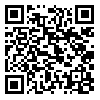شنبه 29 آذر 1404
[Archive]
دوره 11، شماره 2 - ( بهار 1402 )
جلد 11 شماره 2 صفحات 140-131 |
برگشت به فهرست نسخه ها
Download citation:
BibTeX | RIS | EndNote | Medlars | ProCite | Reference Manager | RefWorks
Send citation to:



BibTeX | RIS | EndNote | Medlars | ProCite | Reference Manager | RefWorks
Send citation to:
Bahrampour S, Davoodi A, Fath N, Naziri G. The Mediating Role of Postpartum Depression and Childbirth-related PTSD in the Relationship Between Attachment Styles and Postpartum Bonding Among Mothers in Ahvaz City, Iran. PCP 2023; 11 (2) :131-140
URL: http://jpcp.uswr.ac.ir/article-1-853-fa.html
URL: http://jpcp.uswr.ac.ir/article-1-853-fa.html
The Mediating Role of Postpartum Depression and Childbirth-related PTSD in the Relationship Between Attachment Styles and Postpartum Bonding Among Mothers in Ahvaz City, Iran. Practice in Clinical Psychology. 1402; 11 (2) :131-140
چکیده: (3272 مشاهده)
Objective: Several studies have explored the correlation between postpartum depression and a weak mother-infant bond; however, fewer studies have analyzed how other postpartum mental health conditions, such as childbirth-related post-traumatic stress disorder (PTSD), or important personal characteristics, including adult attachment styles, affect the quality of the mother-infant bond. This study aims to examine the association between attachment styles and postpartum bonding in mothers, considering the mediating influence of postpartum depression and childbirth-related PTSD.
Methods: A total of 150 mothers, 4 to 12 weeks postpartum, completed a demographic questionnaire, the Edinburgh postpartum depression questionnaire, the posttraumatic stress questionnaire related to the birth of a child, the mother-child bonding questionnaire, and the attachment style questionnaire. The posttraumatic stress related to the birth of a child questionnaire was translated into Persian for the first time and was used after confirming its validity and reliability. The proposed model was examined by the structural equation modeling method.
Results: The conceptual model’s results showed that the direct and standardized effect of anxious attachment style (β=0.49, P=0.001) and avoidant attachment style (β=0.47, P=0.001) on postpartum depression were significant. Also, the direct effect of anxious attachment style (β=0.59, P=0.001) on postpartum PTSD was significant. However, the coefficient of avoidant attachment style (β=-0.04, P=0.581) was not significant for postpartum PTSD. Also, the coefficients were investigated from the direct effect of postpartum depression, postpartum PTSD, anxious attachment style, and avoidant attachment style. The obtained results showed that postpartum depression (β=0.27, P=0.001), postpartum PTSD (β=0.43, P=0.001), and anxious attachment style (β=0.39, P=0.001) could predict the mother-child bond. However, the avoidant attachment style (β=0.00, P=0.946) could not predict the mother-child bond.
Conclusion: The findings of the study revealed that insecure attachment styles were linked to challenges in forming a strong mother-infant bond. Anxious attachment was also associated with bonding difficulties, which were influenced by symptoms of postpartum depression and childbirth-related PTSD. In contrast, a higher degree of avoidant attachment style was associated with more significant difficulties in bonding, which were mediated by symptoms of depression. Accordingly, if interventions aim to enhance the mother-infant bond, treatment should focus on addressing childbirth-related PTSD, PPD symptoms, and insecure attachment styles.
Methods: A total of 150 mothers, 4 to 12 weeks postpartum, completed a demographic questionnaire, the Edinburgh postpartum depression questionnaire, the posttraumatic stress questionnaire related to the birth of a child, the mother-child bonding questionnaire, and the attachment style questionnaire. The posttraumatic stress related to the birth of a child questionnaire was translated into Persian for the first time and was used after confirming its validity and reliability. The proposed model was examined by the structural equation modeling method.
Results: The conceptual model’s results showed that the direct and standardized effect of anxious attachment style (β=0.49, P=0.001) and avoidant attachment style (β=0.47, P=0.001) on postpartum depression were significant. Also, the direct effect of anxious attachment style (β=0.59, P=0.001) on postpartum PTSD was significant. However, the coefficient of avoidant attachment style (β=-0.04, P=0.581) was not significant for postpartum PTSD. Also, the coefficients were investigated from the direct effect of postpartum depression, postpartum PTSD, anxious attachment style, and avoidant attachment style. The obtained results showed that postpartum depression (β=0.27, P=0.001), postpartum PTSD (β=0.43, P=0.001), and anxious attachment style (β=0.39, P=0.001) could predict the mother-child bond. However, the avoidant attachment style (β=0.00, P=0.946) could not predict the mother-child bond.
Conclusion: The findings of the study revealed that insecure attachment styles were linked to challenges in forming a strong mother-infant bond. Anxious attachment was also associated with bonding difficulties, which were influenced by symptoms of postpartum depression and childbirth-related PTSD. In contrast, a higher degree of avoidant attachment style was associated with more significant difficulties in bonding, which were mediated by symptoms of depression. Accordingly, if interventions aim to enhance the mother-infant bond, treatment should focus on addressing childbirth-related PTSD, PPD symptoms, and insecure attachment styles.
نوع مطالعه: پژوهشي |
موضوع مقاله:
رويكرد شناختي رفتاري
دریافت: 1401/8/1 | پذیرش: 1401/9/15 | انتشار: 1402/1/12
دریافت: 1401/8/1 | پذیرش: 1401/9/15 | انتشار: 1402/1/12
| بازنشر اطلاعات | |
 |
این مقاله تحت شرایط Creative Commons Attribution-NonCommercial 4.0 International License قابل بازنشر است. |



